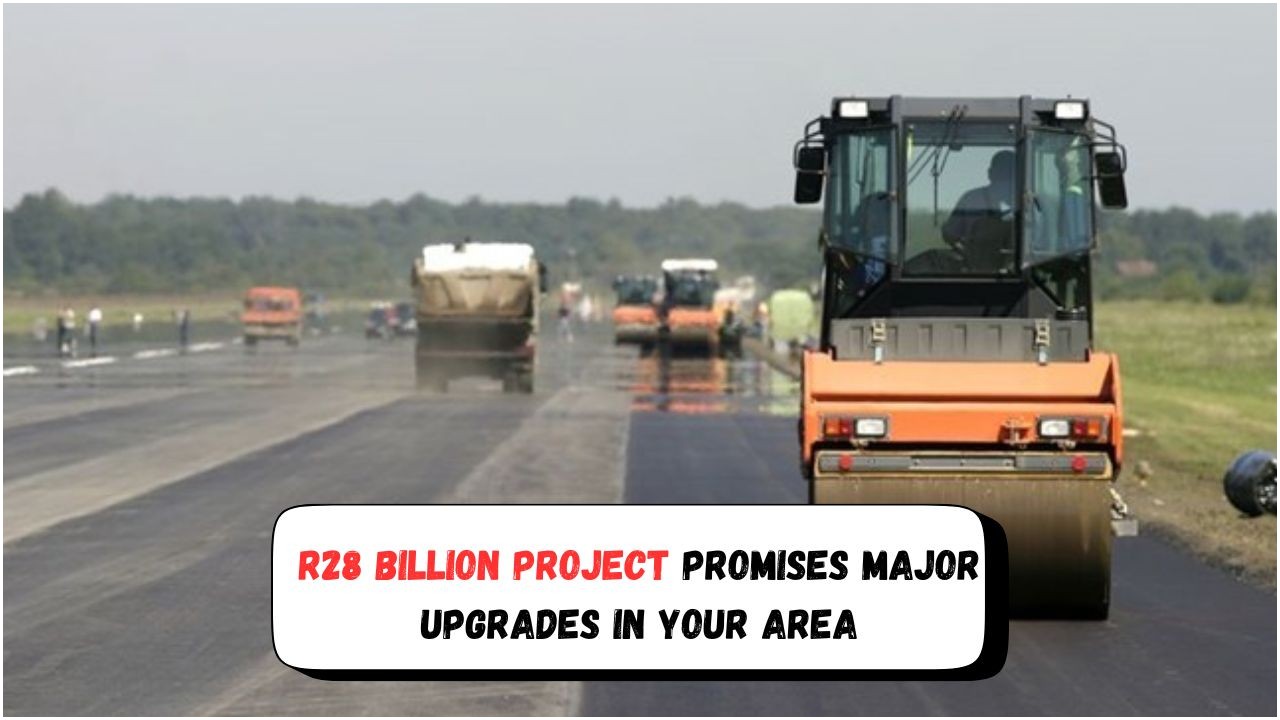R28 Billion Boost in South Africa: The South African government has recently announced a significant R28 billion allocation aimed at addressing the country’s pressing load shedding and transport challenges. This substantial financial injection is viewed as a pivotal step towards stabilising the energy grid and improving infrastructure, which are both critical for economic growth and societal well-being. Load shedding has long been a thorn in the side of South Africans, causing disruptions in daily life and affecting businesses nationwide. Simultaneously, the transport sector struggles with outdated infrastructure, leading to inefficiencies and delays. This new funding aims to tackle these issues head-on, promising a brighter and more stable future for the nation.
Load Shedding Solutions: Will R28 Billion Make a Difference?
The persistent issue of load shedding in South Africa has been a major inconvenience for both individuals and businesses, hampering productivity and economic development. With the R28 billion funding, the government plans to invest in modernising the electricity grid and increasing power generation capacity. This includes the development of renewable energy projects, such as solar and wind farms, which are essential for diversifying the energy mix and reducing dependency on coal.
- Investing in renewable energy infrastructure
- Upgrading existing power stations
- Improving grid stability with smart technology
- Encouraging private sector participation
Transport Infrastructure: A New Era with R28 Billion?
South Africa’s transport infrastructure has long been in need of revitalisation. Congested roads and dilapidated rail systems have hindered economic progress and everyday life. The R28 billion boost will focus on overhauling the transport network, enhancing efficiency and reliability. Key areas of investment include the expansion of public transport systems and the maintenance of highways and bridges. These improvements are expected to reduce travel times and improve safety, fostering a more connected and productive society.
- Expansion of public transport networks
- Maintenance of critical transport infrastructure
- Implementation of smart traffic management systems
- Promotion of sustainable transport options
Economic Impact of the R28 Billion Investment
Beyond solving immediate challenges, the R28 billion injection is anticipated to have a broader economic impact. By addressing energy and transport issues, South Africa can create a more conducive environment for business and investment. Improved infrastructure will attract foreign investors and boost local enterprises, ultimately leading to job creation and economic growth.
 Thousands Stranded by August NSFAS Blockages: Discover the Viral R5,200 WhatsApp Hack to Solve It
Thousands Stranded by August NSFAS Blockages: Discover the Viral R5,200 WhatsApp Hack to Solve It
- Increased foreign direct investment
- Boost in local business development
- Job creation across various sectors
- Enhanced economic stability
Challenges and Considerations in Spending the R28 Billion
While the R28 billion investment holds great promise, several challenges and considerations must be addressed to ensure its success. Effective implementation, transparency, and accountability are critical to achieving the desired outcomes. Furthermore, community engagement and stakeholder participation are essential to align the initiatives with local needs and expectations.
- Ensuring transparency and accountability
- Effective project management and oversight
- Community involvement in planning processes
- Addressing potential environmental impacts
Stakeholder Involvement in the R28 Billion Initiative
The role of stakeholders is crucial in the successful execution of the R28 billion initiative. Government agencies, private sector players, and local communities must collaborate to ensure alignment of interests and maximise the benefits of the investment.
- Government agencies coordinating efforts
- Private sector involvement in infrastructure projects
- Community input in development plans
- NGO partnerships for social benefits
Comparative Analysis: R28 Billion in South Africa vs. Global Practices
Examining how similar investments have been handled worldwide can provide valuable insights for South Africa. Countries that have successfully modernised their infrastructure often prioritise transparency, stakeholder engagement, and sustainable practices.
- Case studies from developed nations
- Best practices in infrastructure development
- Lessons learned from international projects
- Application of global standards
Monitoring and Evaluation of the R28 Billion Impact
To ensure the success of the R28 billion initiative, ongoing monitoring and evaluation are vital. Tracking progress and assessing outcomes will allow for adjustments and improvements, ensuring that the investment yields the intended benefits.
 Eastern Cape School Shuts Down Amid #JusticeForCwecwe Uproar: Parents Call for Immediate Action
Eastern Cape School Shuts Down Amid #JusticeForCwecwe Uproar: Parents Call for Immediate Action
- Regular progress reviews
- Performance indicators and benchmarks
- Feedback mechanisms for stakeholders
- Continuous improvement strategies
Future Prospects: Beyond the R28 Billion Initiative
The R28 billion investment is just the beginning of South Africa’s journey towards improved infrastructure and stability. Future initiatives should build on this foundation, focusing on sustainable development and innovation to ensure long-term prosperity.
- Continuation of infrastructure development projects
- Innovation in sustainable technologies
- Long-term economic and social benefits
- Vision for a resilient South Africa
FAQs About the R28 Billion Investment
- What is the main goal of the R28 billion investment?
The primary aim is to resolve load shedding and improve transport infrastructure in South Africa. - How will renewable energy be integrated?
The investment will fund solar and wind projects to diversify energy sources. - What are the expected economic benefits?
Job creation, increased investment, and enhanced economic stability are anticipated outcomes. - Who are the key stakeholders in this initiative?
Government, private sector, local communities, and NGOs are crucial stakeholders. - How will the success of the initiative be measured?
Through regular monitoring, evaluation, and stakeholder feedback mechanisms.









